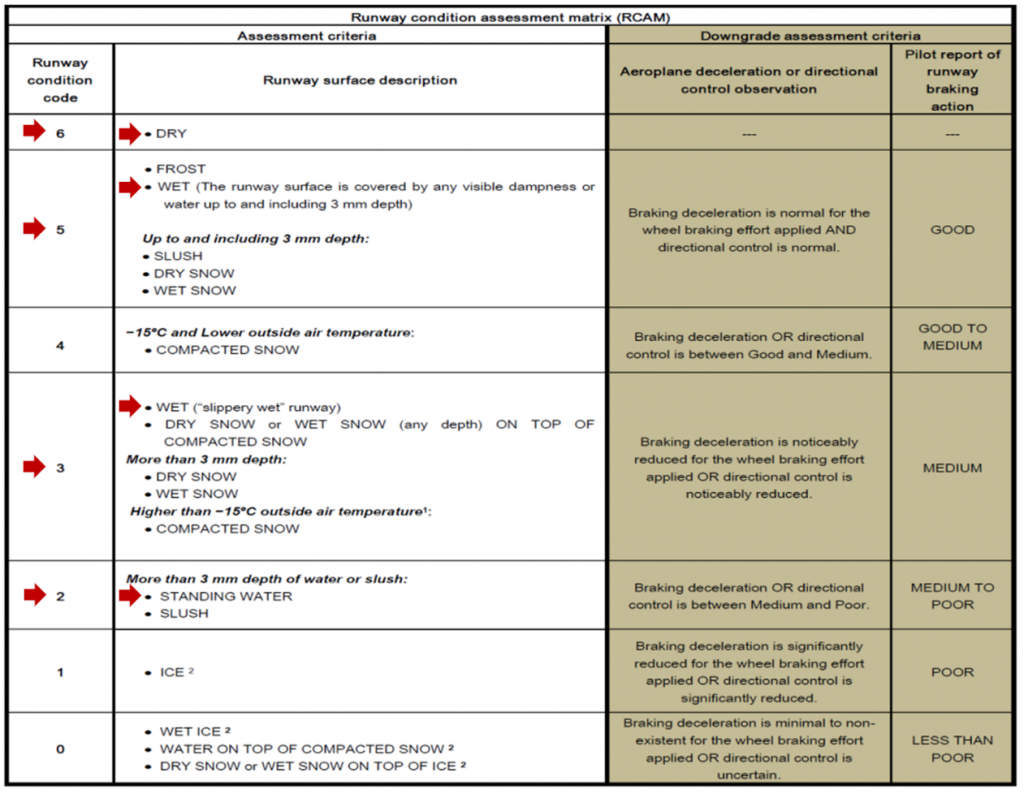With the current methodology of runway condition monitoring, when a runway is contaminated by ice or snow, the runway inspectors need to determine the type, depth, and coverage of these contaminants.
The global reporting format (GRF) must be enforced for worldwide implementation from 4 November 2021. With GRF, all airports must do runway condition reports (RCR) even in the summertime and need to take care of the SNOWTAM publishing all year round in certain situations. This issue becomes more important in tropical areas that may not be accustomed to inspecting the runways. Especially in warm countries, the runway conditions can change very quickly due to tropical rainfall.
Water on top of rubber deposits or standing water can be very slippery and for safety reasons, it is reasonable to report these to the landing aircraft. Thick water layers also generate drag for taking off aircraft, which affects the pilot’s performance calculation parameters. With the use of the runway condition assessment matrix (RCAM), the inspectors in these areas will be able to react quickly to changing conditions.
How to implement GRF in warm regions
In GRF, the runway condition report is developed on the basis of RCAM, which has a set of runway conditions and a number that is allocated to each. Depending on the weather conditions and runway contamination, the code changes. In cold countries where the airport is exposed to snow and ice, the runway inspector uses the full RCAM version to report the runway condition. In warm countries where the airports are not exposed at all to snow and ice, water is considered as the only contaminant and the inspector only uses the section of RCAM related to water.
As the International Civil Aviation Organization (ICAO) states: “The global reporting system and format have been designed to cover all the world’s climatic zones. To achieve this, the global reporting system and format have a flexibility mechanism which states may use if a state ever experiences ice, snow or frost.”
The RCAM consists of six runway condition codes and categories. The red arrows in the table show the runway condition codes and assessment criteria that need to be considered in warm regions and summertime. To assess the runway condition in warm countries and summertime, the inspector needs to consider runway condition code two, which refers to standing water, runway condition code three, which refers to the slippery wet runway, runway condition code five, which refers to wet conditions and runway condition code six, which refers to dry conditions.

How important is the operator’s responsibility in GRF in warm regions?
GRF gives more responsibility to airdrome operators to monitor the runway condition in warm regions where previously no SNOWTAMs have been published. Also, countries familiar with SNOWTAM need to implement the reporting process all year round. Note that if no SNOWTAM is published from the airport, pilots consider that the runway is either dry (six) or wet (five).
Standing water on the runway’s surface is considered the main contaminant in warm countries. Thus, the runway inspector’s responsibility to recognise the runway condition will be significantly increased in this situation because 3mm water depth or less is considered as a wet situation, but anything above 3mm would be considered as standing water. In the case of standing water, the runway condition code would be two.
Moreover, the runway condition codes three and five both indicate a normal wet condition in which the depth of the water is 3mm or less. However, the runway condition code will be downgraded from five to three (‘slippery wet’) due to some factors, for instance, friction measurements with continuous friction measuring equipment such as Skiddometer BV11.
When friction values drop below agreed limits, it indicates that the surface texture needs to be improved or rubber accumulation removed from the surface. When friction has been improved and friction tested again, the runway condition code on a wet surface can be upgraded to five again. There is a huge difference to the aircraft if the runway condition code is five or three. Therefore, it’s essential to have a periodical friction testing programme agreed at all airports to prevent the ‘slippery wet’ situation and do necessary improvements timely.
There is software such as Global Runway Reporter which helps with the reporting process and the SNOWTAM publishing automation. Also, there are precipitation sensors that can be programmed to help recognise standing water situations.

